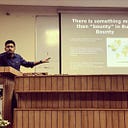#BugBounty — How I was able to bypass firewall to get RCE and then went from server shell to get root user account!
Hi Guys,
This vulnerability blog is about when Apache struts2 CVE-2013–2251 went viral and was getting highly exploited because of the impact of vulnerability which was leading to execution of remote commands. In short it was — A vulnerability introduced by manipulating parameters prefixed with “action:”/”redirect:”/”redirectAction:” allows remote command execution in the java web application using < Struts 2.3.15 as a framework.
Now when this loophole went viral, major application firewall companies started updating their rule engines and detection technique in order to prevent it from happening which was a pretty obvious and responsible thing. But I was not only able to bypass the firewall and get the remote code execution but also able to get the shell of the server and that too as root user by exploiting kernel CVE. :)
Let’s see what was the complete hack —
This comes when I was testing for a travel booking website. As it was very clear in order to find whether the application is running over vulnerable Apache Struts framework , you have to simply check for the following vulnerable parameters — “action, redirect,redirectAction” and for the right payload, I google’d a little (as for this, I have to construct an OGNL expression) and this helped me a lot-http://blog.opensecurityresearch.com/2014/02/attacking-struts-with-cve-2013-2251.html , below is the payload used to run the command “ifconfig”
redirect:${#a=(new java.lang.ProcessBuilder(new java.lang.String[]{‘ ifconfig’})).start(),#b=#a.getInputStream(),#c=new java.io.InputStreamReader(#b),#d=new java.io.BufferedReader(#c),#e=new char[50000],#d.read(#e),#matt=#context.get(‘com.opensymphony.xwork2.dispatcher.HttpServletResponse’),#matt.getWriter().println(#e),#matt.getWriter().flush(),#matt.getWriter().close()}

but as expected , it was blocked by the application firewall , and redirected me to a bots page-

and when anything like this happens to me, I always return to the basics. So as pointed out earlier, I knew that which all parameters were vulnerable and one of them was “redirect” which I used in the above request. “Redirect” , yes you felt it right , let’s try for some redirection here and I simply put redirect:http://www.goal.com -

and as you can see I got 302 redirection to location”http://www.goal.com :) and so my earlier “ifconfig” payload got blocked and this redirection worked , this gave an idea to bypass the firewall and so , I combined both the above payload-
redirect:http://www.goal.com/${#a=(new java.lang.ProcessBuilder(new java.lang.String[]{‘ ifconfig’})).start(),#b=#a.getInputStream(),#c=new java.io.InputStreamReader(#b),#d=new java.io.BufferedReader(#c),#e=new char[50000],#d.read(#e),#matt=#context.get(‘com.opensymphony.xwork2.dispatcher.HttpServletResponse’),#matt.getWriter().println(#e),#matt.getWriter().flush(),#matt.getWriter().close()}
and fired the request-

Time for some cheer as I was able to bypass the firewall and got the “ifconfig” command output running :)

Now the next target was to get the remote shell of the server and I tried it using reverse ssh tunneling and public key authentication which allow SSH users to login in without entering passwords. For this I had to put my attacker server ssh public key in the victim server’s authorization list~/.ssh/authorized_keys. in order to prove the identity and as this going to be a reverse ssh tunnel , I had to add id_rsa.pub key of the victim ssh server as well. In order to define the concept of above 2 keywords in short and understand the concept of public key authentication—
id_rsa.pubis a public key that you add to other hosts'authorized_keysfiles to allow you to log in as that user.authorized_keysis a list of public keys that are allowed to log into that specific account on that specific server.
1st Step- Cat the id_rsa.pub file of the victim server using RCE

2nd Step- Copy the authorized_keys from victim server to attacker server

3rd Step- Copy back the modified authorized_keys from attacker server to victim which I got by reading id_rsa.pub

Now the final step — SSH using the reverse tunnel on attacker machine so I ran the command-

Pheww! Able to reach to the remote shell of server. :) but I was not logged in as a root that means I could have only limited right and access to files and commands. Now in order to logged in as root user, firstly I found out what was the current kernel version running on victim machine and it was -

So the kernel version found to be 2.6.32 which I google’d in order to find if there was any open CVE against this and to my luck, I found that it was vulnerable to privilege escalation and exploit was over github too — https://github.com/realtalk/cve-2013-2094 . Without wasting much time, I ran the exploit.

and finally I was able to get privilege escalation to the root user! :) and this is how the chain to get the remote shell of the server as a root user by exploiting apache strut 2 vulnerability and kernel version exploit ends. Thanks to Kunal Aggarwal for all the mutual efforts!
Thanks for reading!
